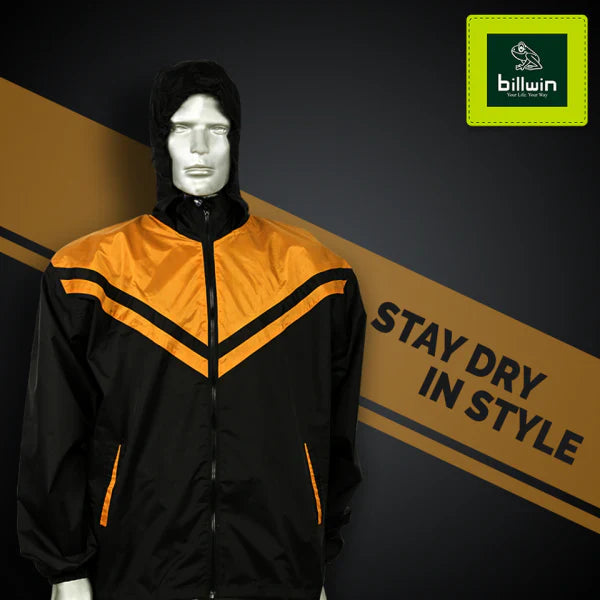
Water Resistent Vs. Water Repellent Vs. Waterproof Jacket: Know The Difference Before Buying
There are many types of jackets that you can get from rainwear manufacturers in India. But how do you decide between a waterproof jacket, water resistant jacket, and a water repellent jacket?
To help clear your confusion, I will explain the differences between the three terms.
What Is A Water Resistant Jacket?
Water repellent jackets offer the lowest level of water protection as compared to the other types of jackets. They resist rain showers, light rain, and snow flurries but not heavy exposure to the elements. There is a coating that acts as a barrier between the user and the rain. Tightly woven fabrics prevent water from seeping into the motorcycle rain jacket. It is possible to make the jacket water-repellent by adding a coating.
What Is A Water Repellent Jacket?
A water-repellent jacket offers a bit more protection than a water-resistant jacket. Rain water does not easily penetrate the jacket but forms beads on the outside, which is technically known as hydrophobic.
Water repellent jackets depend on surface area angling to repel liquids. If a droplet comes in contact with the fabric at a 90-degree angle, then some water will be absorbed, but if the angle of contact is more than 90 degrees, then less water will be absorbed.
Once a liquid makes contact with the motorcycle rain jacket, the impact angle and the surface area covered will determine how much water will be repelled. Scientists, over the years, have come up with a list to explain how some fabrics repel water. Based on these results, the fabric is graded on how droplets form on their surface.
The list evaluates the following
- Chemical composition of the fabric.
- Surface area roughness.
- Porosity of the fabric
- How other substances like oil, sweat, and dirt affect the water repellent qualities of the fabric.
Testing for water repellency is done in a laboratory and is of four classes
CLASS A: Permeability of the fabric which makes up the motorcycle rain jacket is tested against water pressure
CLASS B: Water penetration is tested in a simulated environment like a rainstorm
CLASS C: In class C, how much water can be absorbed is measured.
CLASS D: The fabric is tested against angled liquid contact.
If the fabric fulfills these criteria of testing, it is permitted for use in outerwear production
Unlike synthetic fabrics, refined fabrics are not naturally water-repellent. A DWR coating must be applied to the exterior or interior of the fabric. DWR is a man-made chemical that repels water once it is applied to the fabric. DWR-treated garments lose their water-repellant quality after a period of time due to oils and dirt, so a reapplication is necessary, which can be done via a quick spray, washing, or both. Among these, a quick spray is the easiest. Just spray the exterior of the garment. Let it dry, and you are good to go.
What Is A Waterproof Jacket?
If you want a motorcycle rain jacket that can withstand some serious rain, then a waterproof jacket is your best bet. To ensure the fabric is truly waterproof, companies experiment with outward-facing fabrics, inward laminates, or coatings in layers.
In a lab, a fabric is considered waterproof when it is able to resist a certain amount of water. Because there is no industry standard on how much water a fabric needs to be repelled before it is considered to be waterproof, your best bet is to trust a brand’s claim on how water-repellent its product is.
Why Choose Billwin Rain Jackets?
Billwin is a leading rain jacket manufacturer in India. We offer high-quality rain jackets designed as per global standards and specifications. Our rain jacket products provide maximum comfort and performance in all weather conditions. Our rain jackets have a variety of features that allow them to be used in a variety of conditions. They keep you dry regardless of the weather conditions.
